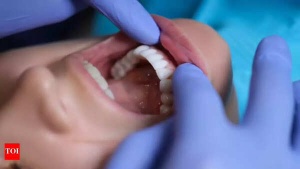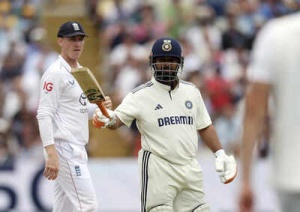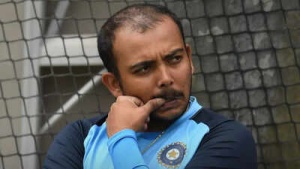The recent passing of Indian television star Shefali Jariwala has sparked widespread concern and highlighted a disturbing trend: the increasing incidence of sudden cardiac issues leading to fatalities in seemingly healthy, middle-aged women. While the official cause of Jariwala's death is pending a post-mortem and forensic analysis, preliminary reports point to cardiac arrest.

Sudden Cardiac Death (SCD), once considered rare in young adults, is now occurring with increasing frequency, particularly in India. Cardiovascular diseases are responsible for approximately 28% of all deaths in India, with nearly 10% attributed to SCD. A significant portion of these deaths occur in individuals between 30 and 50 years old.
India's rapid socioeconomic changes have contributed to this rise, marked by:
These factors contribute to a surge in conditions like hypertension, obesity, diabetes, and coronary artery disease, all of which are major risk factors for SCD.
Traditionally, SCD was more prevalent in men. However, recent studies highlight the unique risks faced by women, who often have no prior cardiac diagnoses before experiencing a fatal event. Structural abnormalities, like myocardial scarring and ischemic heart disease, often go undetected until post-mortem examinations. Many women don't exhibit classic warning signs such as chest pain or ECG anomalies, making early detection difficult.
Women in their 40s and 50s face a significant risk from underlying cardiac conditions. In younger populations, SCD is frequently linked to inherited or electrical disorders, including:
These conditions often remain asymptomatic until a fatal arrhythmia occurs. Additional risk factors in this age group include left ventricular hypertrophy, obesity, and myocardial fibrosis. The progression of myocardial scarring and fibrosis with age results from exposure to cardiovascular risks, repeated micro-ischemic events, and hormonal changes during perimenopause. Moreover, conditions like Myocardial Infarction with Non-Obstructive Coronary Arteries (MINOCA), more prevalent in younger women, often leave no trace in autopsies.
Shefali Jariwala's life was marked by significant stress. Takutsobo cardiomyopathy (Broken Heart Syndrome), or stress-induced cardiomyopathy, is a major cause of SCD in women who multitask and experience emotional stress. Jariwala also faced personal struggles, including divorce, anxiety, depression, and epilepsy, all of which can impact cardiovascular health. Psychiatric medications, particularly those that prolong the QT interval, have also been linked to increased SCD risk.
Women are often underrepresented in preventive heart care. Symptoms like fatigue, palpitations, or breathlessness are often dismissed or misattributed, delaying crucial intervention. While heart attacks are caused by blocked arteries, cardiac arrest stems from electrical disturbances that cause the heart to stop suddenly. Immediate CPR and defibrillation are often the only lifesaving measures, emphasizing the need for early risk identification.
Medical experts are advocating for targeted public health strategies, including enhanced early screening tools tailored to women, particularly during perimenopause when cardiac risks increase.
The entertainment industry and fans mourn the loss of Shefali Jariwala. Her tragic death serves as a stark reminder of an overlooked health crisis and the urgent need for systemic change in how women's heart health is addressed. Shefali Jariwala captivated audiences with her talent and presence. Her untimely demise should be a symbol of awareness, highlighting the potentially fatal silence of heart issues in women and demanding immediate attention, investment, and action towards women's cardiac health.
Newer articles
Older articles
 Gavaskar Calls for Kuldeep Yadav's Inclusion in Second Test Amid Bumrah Fitness Concerns
Gavaskar Calls for Kuldeep Yadav's Inclusion in Second Test Amid Bumrah Fitness Concerns
 Early Warning Signs: 5 Heart Attack Symptoms to Watch Out For a Month in Advance
Early Warning Signs: 5 Heart Attack Symptoms to Watch Out For a Month in Advance
 Oral Cancer: Spot the Signs, Understand the Risks, and Why Early Detection is Key
Oral Cancer: Spot the Signs, Understand the Risks, and Why Early Detection is Key
 Science-Backed: Simple Habits for a Stronger Heart, According to Experts
Science-Backed: Simple Habits for a Stronger Heart, According to Experts
 Rishabh Pant's Composed Reply Deflates Harry Brook's Sledge in Edgbaston Test: Watch Key Moments
Rishabh Pant's Composed Reply Deflates Harry Brook's Sledge in Edgbaston Test: Watch Key Moments
 Jaiswal Aims to Eclipse Gavaskar's 49-Year-Old Record in Edgbaston Test Showdown
Jaiswal Aims to Eclipse Gavaskar's 49-Year-Old Record in Edgbaston Test Showdown
 Rohit Sharma Credits Barbados as India's Lucky Ground After T20 World Cup Triumph
Rohit Sharma Credits Barbados as India's Lucky Ground After T20 World Cup Triumph
 FIFA Club World Cup 2025: Upsets, Messi Magic, and 2026 World Cup Concerns Emerge From Group Stage
FIFA Club World Cup 2025: Upsets, Messi Magic, and 2026 World Cup Concerns Emerge From Group Stage
 Prithvi Shaw Admits to Missteps, Lost Focus Amid Career Setbacks
Prithvi Shaw Admits to Missteps, Lost Focus Amid Career Setbacks
 India's Fielding Failures Under Scrutiny After First Test Defeat to England: Former Selector критикует Dropped Catches
India's Fielding Failures Under Scrutiny After First Test Defeat to England: Former Selector критикует Dropped Catches